The link between Art, Technology, Science and other domains is increasingly expanding due to the effects of the Digital Revolution, characterized by fast technological advancements, the ease of access to information and the increasing degree of communication in contemporary culture.
Definition:
The expanding role of new technologies opens new ranges of possibilities, tools, and means of expression. These emergent “Production Tools” are invading diverse fields, such as Industry (from objects to Pharmaceutical etc.), Construction (buildings to cities), and Art (Music, Movies, Installations)Digital Art can be defined as a relevant exploratory field based on the use of advanced tools taken from other disciplines, such as software, robotics, AI, machine learning, etc. Digital Art is related to data visualization, based on the idea of Interface as the connection between humans and the digital world. Artists started using machines and data to generate new “interfaces”, creating new relationships where the process would be the identity, the code the DNA, and the Art is the Body (De Landa in “Deleuze and the use of genetic Algorithm in Architecture”, 2001).The linked to Advanced Architecture and Digital Art is related to the effects of Digital Revolution, from widely used software used in computer aided design (CAD), to exploratory software and hardware that are opening new possibilities to visualize a more abstract nature of space and shapes, and to develop a universe of virtual simulations. Nowadays programmers, scripters, hackers, coders, are given the opportunity to experiment coding via more developed interfaces (software, programs and hardware). Some new programs even surpasses the human brain, by learning from their experiences through heuristic mechanisms but can also to store data, to compare and find solutions to upcoming projects. The effects of Digital Art will likely continue to expand in the future.
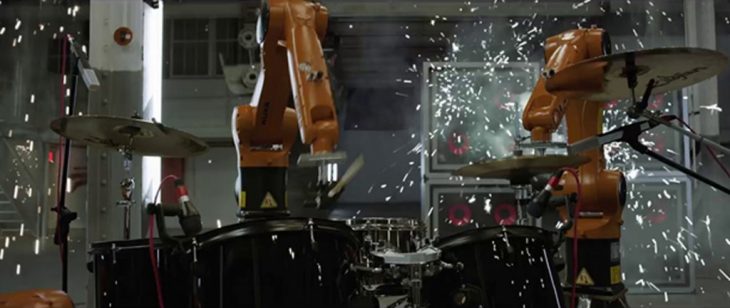
Example of Digital Music Project Mechanical Mirrors By Daniel Rozin
Goal:
This time-field provides a list of projects and referents in the field of Digital Art related to Advanced Architecture, including softwares and hardwares that have played a significant role in enabling the exploration of the diversity and the unforeseen possibilities of each new tool.
Our Categories:
Generative Art
Artificial Intelligence
Robotics
Performance
Augmented Reality
Digital Music
Interactive Art
Installation
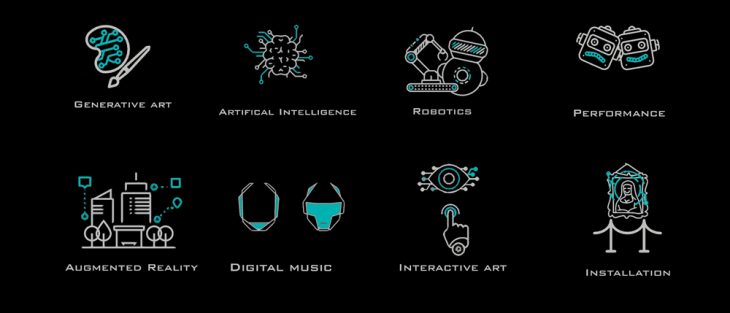
Main Categories
Generating Sub Categories In Timefield
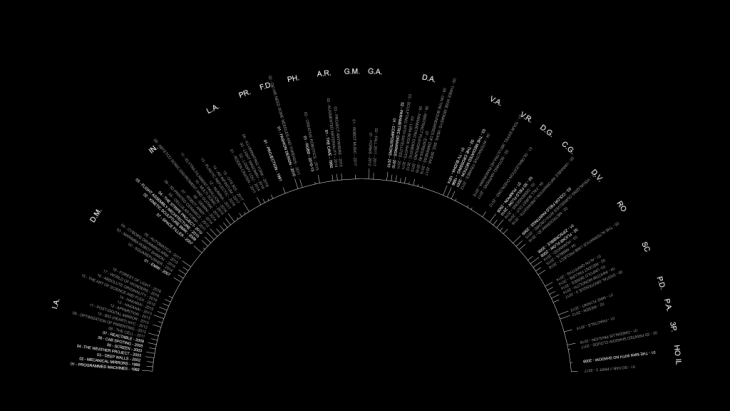
Order of Categories and Sub Categories By Order of 100 Projects related to digital Art
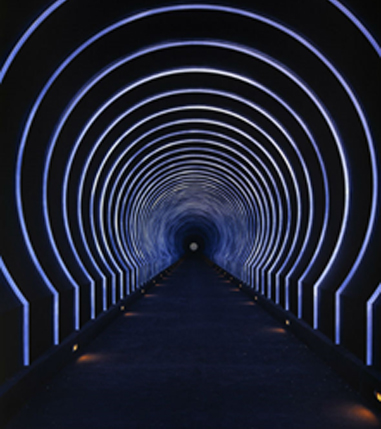
Example of Light Art Category Project
Roden Crator by James Turell
Tools In Timefield
3D EXTRUDER (KUKA), ROBOTS / AIBOTS / DRONES, ARDUINO,3D MODEL SOFTWARE (GRASSHOPPER – RHONO / SKETCHUP / UNITY ,3D PRINTER, LRL MERCURY APP, PROCESSING / C++ / CODING, KINECT, LIGHT / LASER PROJECTORS, 3D MAPPING SORFTWARE, MOTION SENSOR, LASER CUTTER, CNC MILLING, PHOTOSHOP / ILLUSTRATOR, WACOM INTUOS, STOK,SERVO ENGINE, MANDELBUB,QR SCANNER.
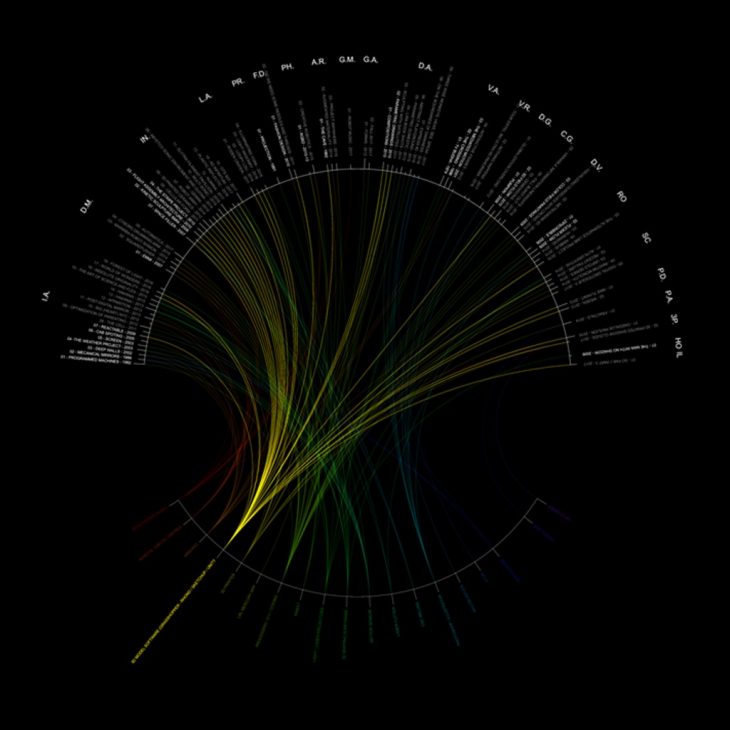
Example of link between each tool and projects
3D MODEL SOFTWARE (GRASSHOPPER – RHINO / SKETCHUP / UNITY
Generating The Timefield:
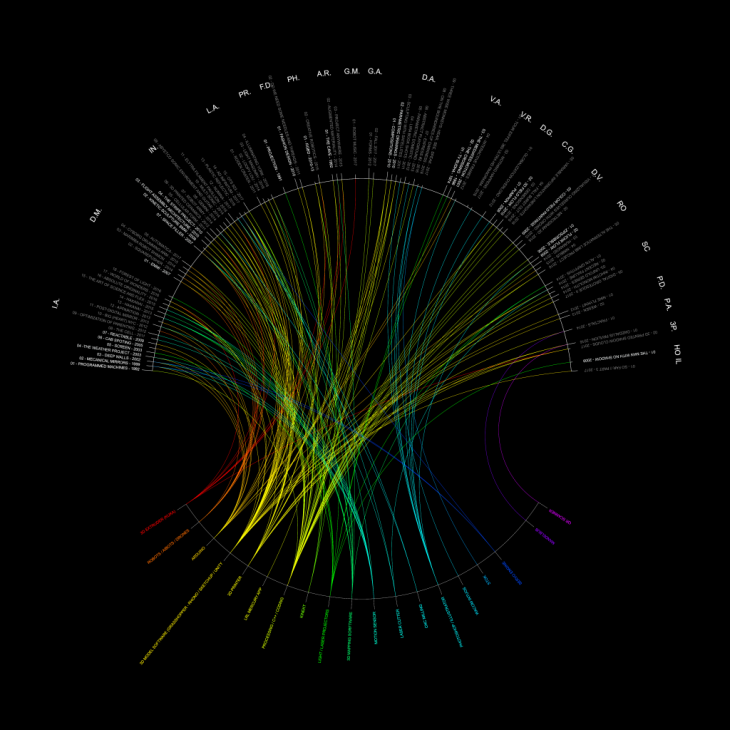
Conclusion:
The connection between these 100 Digital Art projects and each digital tool shows us the importance of each tool in making the successful project. As result these tools mostly used in art and architecture and with this timefield we get to know importance of nowadays tools for advanced architecture and which of them is more useful in advanced architecture.
“Digital Art Timefield” is a project of IAAC, Institute of Advanced Architecture of Catalonia, developed as part ofTheory for Advanced Architecture [TAK] Course at the Master in Advanced Architecture program in 2017/18 by Mohammad Amin Ziaie Bigdeli,Abhishek Soman,Yasmina El Helou,Francois Nour,Yingxin Du.
Tutor : Maite Bravo, Manual Gausa